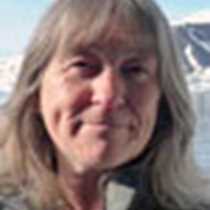Shetland, Scotland
The distant islands of Shetland, the most northerly outposts of the British Isles, lie halfway between Scotland and Norway, and the islanders take great pride in their strong Viking heritage.
The morning held the promise many new sights and experiences before us. We headed south from our berth in the lively seaport town of Lerwick, passing amongst Shetland crofts and farms, and deserted stone cottages. Everywhere, pastures blowing with field buttercups and daisies, provide grazing for the sheep and their lambs graze which produce wool for Shetland’s famous woollen products. Especially enchanting are the little Shetland ponies, irrestible with their skewbald and piebald markings, which readily come to be stroked and admired.
The site of Jarlshof lay unsuspected for hundreds of years beneath the sand dunes, until a sudden storm ripped open the turf to reveal the remains of a multi-period series of settlements. Today we can wander freely amongst these exposed but well-preserved ruins. The earliest house remains date back 4,500 years. Around 800 BC a bronzesmith made swords and axe-heads almost identical to those we had seen in the far-away Irish stonghold of Dun Aengus on the Aran islands. His house had a souterrain, or narrow underground chamber which could be used as a secure grain-store, or could act as a place of refuge in times of danger. Borrowing a flashlight and keys from the custodian, the children of our party were able to climb down into this chamber and explore its dark secret places beneath our feet! By the end of the first millennium BC a broch tower had risen over the settlement (half of which has since been claimed by the hungry waves), and a few hundred years later a village of wheelhouses nestled within its protecting walls. It is astounding to us today to be able to enter a wheelhouse through the doorways and passages that its original inhabitents used, to stand around the family hearth that kept them warm, and to sit in the chambers around the walls, deciding which they used as bed-places, where the animals were housed, which were storage areas and which were working areas.
At the southermost point of Sumburgh head, puffins and kittiwakes nest on the sea-cliffs within easy view of our path to the lighthouse landmark. On the rocks below grey seals bask, while overhead the Arctic Skua makes an ominous silouette against the sky. Then we were enthralled to see that a group of killer whales were approaching, the high dorsal fin of several large males particularly visible as they came rising and falling through the swell. We stood transfixed until they disappeared from sight on their southwards course.
The distant islands of Shetland, the most northerly outposts of the British Isles, lie halfway between Scotland and Norway, and the islanders take great pride in their strong Viking heritage.
The morning held the promise many new sights and experiences before us. We headed south from our berth in the lively seaport town of Lerwick, passing amongst Shetland crofts and farms, and deserted stone cottages. Everywhere, pastures blowing with field buttercups and daisies, provide grazing for the sheep and their lambs graze which produce wool for Shetland’s famous woollen products. Especially enchanting are the little Shetland ponies, irrestible with their skewbald and piebald markings, which readily come to be stroked and admired.
The site of Jarlshof lay unsuspected for hundreds of years beneath the sand dunes, until a sudden storm ripped open the turf to reveal the remains of a multi-period series of settlements. Today we can wander freely amongst these exposed but well-preserved ruins. The earliest house remains date back 4,500 years. Around 800 BC a bronzesmith made swords and axe-heads almost identical to those we had seen in the far-away Irish stonghold of Dun Aengus on the Aran islands. His house had a souterrain, or narrow underground chamber which could be used as a secure grain-store, or could act as a place of refuge in times of danger. Borrowing a flashlight and keys from the custodian, the children of our party were able to climb down into this chamber and explore its dark secret places beneath our feet! By the end of the first millennium BC a broch tower had risen over the settlement (half of which has since been claimed by the hungry waves), and a few hundred years later a village of wheelhouses nestled within its protecting walls. It is astounding to us today to be able to enter a wheelhouse through the doorways and passages that its original inhabitents used, to stand around the family hearth that kept them warm, and to sit in the chambers around the walls, deciding which they used as bed-places, where the animals were housed, which were storage areas and which were working areas.
At the southermost point of Sumburgh head, puffins and kittiwakes nest on the sea-cliffs within easy view of our path to the lighthouse landmark. On the rocks below grey seals bask, while overhead the Arctic Skua makes an ominous silouette against the sky. Then we were enthralled to see that a group of killer whales were approaching, the high dorsal fin of several large males particularly visible as they came rising and falling through the swell. We stood transfixed until they disappeared from sight on their southwards course.




